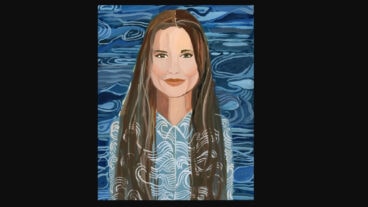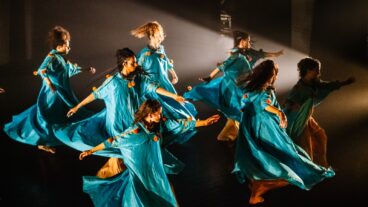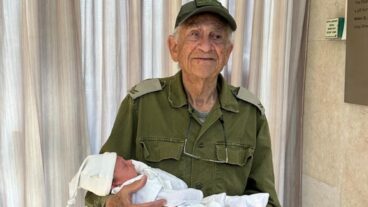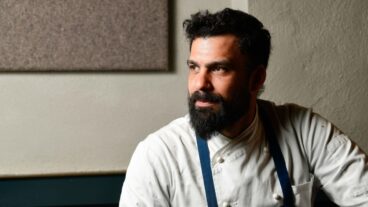Kibbutz-born fashion designer Lia Kes’s “understated but sophisticated” creations are sold to celebrity clients like Kate Hudson and Chelsea Clinton, and can be found in stores across the US.
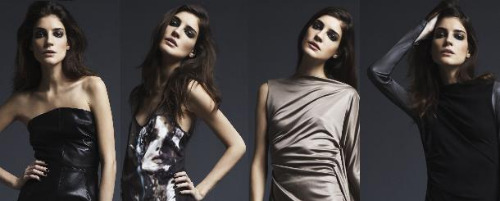
How does a quiet, unassuming, laid-back woman who grew up on a kibbutz in northern Israel become a successful fashion designer living the American dream?
Despite having women like Kim Kardashian, Kate Hudson, Chelsea Clinton and Sarah McLachlan all clamoring for her designs, and the fact that her clothes have graced the covers of a slew of international fashion magazines including Marie Claire and Cosmopolitan, the designer in question, Lia Kes, contends that she hasn’t yet achieved success.
“I just feel that I’m slowly building my business. Of course I want to be successful but I can’t say that I am yet,” the modest Kes insists.
She tells ISRAEL21c that she designs clothes for women like herself: “Women who wake up in the morning and go to the gym, go to work and have to accomplish things. Then they come home, see their kids or have drinks with their husbands and go out to dinner with friends. And they need one garment that they can wear from morning to evening, feel comfortable in, wear it all year round and can still wear it if they travel to a warm or cold country. This is the way I think.”
She couldn’t be anything else
As she continues to chat by telephone from her home in San Francisco, it becomes clear that the quintessential Kes is a woman who lives ‘in the moment’ and trusts her instincts, and this is reflected in her work.
Thus it comes as no surprise that she has no pat answers about how she become a fashion designer; no charming anecdote or childhood experience to trot out to explain what led her down this path. “I couldn’t be anything else,” she says. Period.
Kes can’t even pinpoint the age when she made the decision. All she remembers is that she started pestering her parents for a sewing machine when she was 12, so that she could make her own clothes.
“I got it when I was 13. It was grandma’s old machine,” Kes recalls. “The first thing I ever made was a blue pillow. That’s how I learned to sew, learned about how to thread the needle and create corners. I remember that blue pillow.”
Growing up on Kibbutz Afikim, Kes says she had a teacher for general art who introduced her to the machine, and to whom she owes a great deal. “She really opened doors for me. She was a tailor who was a Holocaust survivor from Germany and she was amazing. She had magic hands,” Kes tells ISRAEL21c.
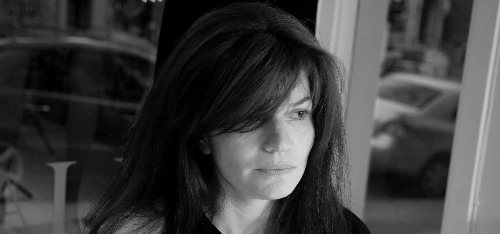
Kes says everything her teacher made, everything she touched, looked like something out of a Dior collection and that it was as if her clothes were created for a princess.
Although she concedes that it may seem bizarre to have been mesmerized by fashion while living on a kibbutz in the far north of Israel, where everyone was garbed in unshapely uniforms, she believes that “growing up on a kibbutz, close to nature and in that type of environment” had an impact on her designs in later life. “Yes, we were on kibbutz; yes we all wore the same thing; but the quality of our clothes was fantastic. Our clothes were all made to measure,” she relates.
From kibbutz to the wide world
Upon completing high school and her compulsory service, which she spent in the air force, Kes obtained a degree in fashion design from Tel Aviv’s Shenkar College. In 2000, she decided to taste life in the Big Apple.
After creating a T-shirt line, which caught the eye of some of New York’s top stores, Kes stayed afloat by managing a leather store and developing her line.
She met and married her husband in 2002, and while she had imagined that her future would be in New York, when he was transferred to San Francisco for work, she set up shop there. Still based there today, she often travels to New York and Los Angeles to meet clients.
Moving to America, she says, definitely expanded her horizons and exposed her to major designers. She cites Haider Ackermann, Ann Demeulmeester and Vionett among her inspirations.
Yet Kes’s designs still retain the essence of the 13-year-old girl who made the blue pillow. She likes to work with fabrics that are natural, raw, and easy on both the eye and the body.
“My designs are like myself,” she says. “Low key, understated, but also sophisticated. My personality is very mellow and casual. This is the way I think and the way I live my life. I don’t dance around my gifts. I just let them be.”
Fashion in Israel reflects life-or-death
Despite her high-profile clients, Kes says she has no desire to skew her business in the red carpet or couture direction, even though she knows it could be very lucrative, especially in nearby Los Angeles.
“Technically I could do the work,” she says. “But the way I build my business and inspiration doesn’t come from working on a red carpet. I don’t think it’s in me, in terms of my character. I’m not a high-volume party girl.”
Clearly, her way is working. Now in its fifth season, the Lia Kes collection is sold in some of the most prominent stores across the US and Europe such as Barney’s Co-Op, Calypso, Bloomingdales, Neiman Marcus Cusp, Fred Segal and others. And while her clothes are available in stores in Israel, she yearns to have her own shop back home.
“What I really want to do,” she reveals, “is to open a store in Tel Aviv. It’s not a rational thing. It’s emotional. I have to have it,” she says with an ache in her voice, adding that “It’s because I still feel very Israeli,” even after living in America for10 years. All Kes’s relatives live in Israel and she travels home at least once a year. “I think I will always be more Israeli than American,” she confesses. “I don’t know if my heart is in Israel, but I think my soul is.”
Designing fashion for Israelis and Americans is very different, she says, because, “I think fashion comes from need; from the way people think and the way they consume.”
She explains that in Israel, “things have to be in your face, and bold and immediate. It has to be trendy.” In contrast, in America according to Kes, things have to make a statement not just in terms of their shape, but they also have to serve a woman’s body: “I think that comes not only from the weather but what we deal with on a daily basis. In Israel people deal with living or dying. We’re either here or not here. Here [in America], we deal with what house do we want to live in – a Victorian or a modern?”
The house that Kes is building
For Kes, the house that currently requires her attention is her fashion house. She’s busy juggling both the retail and the wholesale sides of her business and reveling in having her own store in San Francisco.
Her dream, like the woman herself, seems clear-minded and focused. “I want to grow my business in a very natural, relaxed way,” she says, “Rather than being very aggressive and demanding.”
In addition to the famous names praising her designs are two lesser-known, but no less devoted fans. Six-year-old Sunnye and three-year-old Orrie are already clamoring for mom’s designs, with Sunnye asking if she can start wearing her mother’s clothes when she turns six and a half.
Kes laughs at the recollection, and while still staunchly refusing to see herself as a success, she does admit that Sunnye already understands her mother’s passion and her place in the fashion world.
“Yesterday I told her that a friend was coming to visit from LA and that she was a very famous fashion designer,” Kes recounts, “And my daughter said, ‘Ima, I’m sure your clothes are nicer than hers!'”








